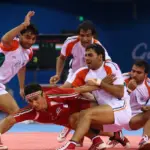Kabaddi, a game profoundly ingrained in the cultural tapestry of India, has transcended boundaries to turn into a globally appreciated game. Eminent for its blend of solidarity, strategy, and agility, Kabaddi has developed from a traditional pastime to a savagely cutthroat game played on various levels. To guarantee a level playing field and standardized gameplay, the dimensions of a Kabaddi court are of paramount importance. This article dives into the intricacies of measuring a junior Kabaddi court, offering a top-to-bottom exploration of its dimensions, delineations, and significance.
What are the measurements of the Kabaddi court?
The junior Kabaddi court, tailored for more youthful players, maintains the pith of the game while accounting for the physical capabilities of its participants. The exact measurements of the court play a pivotal job in characterizing the boundaries and deciding that oversee the game. The following are the detailed dimensions of a junior Kabaddi court:
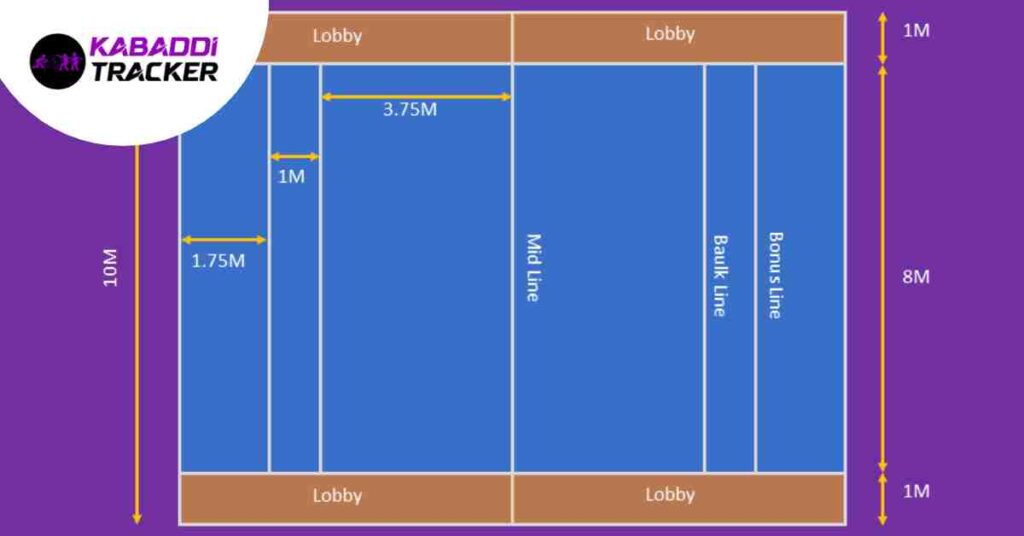
Also Read – Gujarat Fortunegiants players list stats and records
Court Length: The length of a junior Kabaddi court is 11 meters (36 feet). This measurement fills in as a critical factor in shaping the dynamics of the game. Inside this span, raiders, armed with speedy reflexes and strategic reasoning, embark on their daring endeavors across adversary lines. Their goal is to tag as many defenders as conceivable prior to retreating to safety inside their domain. This compact yet action-packed distance demands accuracy, agility, and mental acuity from raiders, as well as formidable teamwork and coordination from defenders.
Court Width: The width of the junior Kabaddi court spans 8 meters (26 feet). This aspect characterizes the spatial breadth inside which players maneuver and strategize everything they might do. On one side, defenders stand fearless, shaping a human barricade against raiders, who operate inside the bounds of this width. On the opposite side, raiders plot their attacks, looking for vulnerabilities in the defenders’ formation. This aspect not only impacts the physical boundaries of the game yet in addition shapes the strategic choices made by players in the two teams.
Midline: Running parallel to the more limited ends of the court, the midline separates the court into equal parts – one for each team. This apparently straightforward line holds profound significance in orchestrating the recurring pattern of the match. It makes way for strategic planning, designating where each team can operate offensively and protectively. As raiders approach the rival side, they should cross the midline, a limit marking the domain they can wander into while tagging rivals. Similarly, defenders should keep raiders from crossing this line, illustrating the midline’s strategic importance in characterizing the battlefront.
Balk Line: Situated at a distance of 3.75 meters (12 feet 6 inches) from the end line, the balk line creates a realm of strategic significance during a raid. For raiders, crossing this line validates their raid attempt, giving them a restricted opportunity to engage rivals and return to safety. Then again, defenders should remain behind the balkline until the raider crosses, limiting their developments and framing a protective line of engagement. This line is emblematic of the strained experience among raiders and defenders, encapsulating the pith of Kabaddi’s to and from nature.
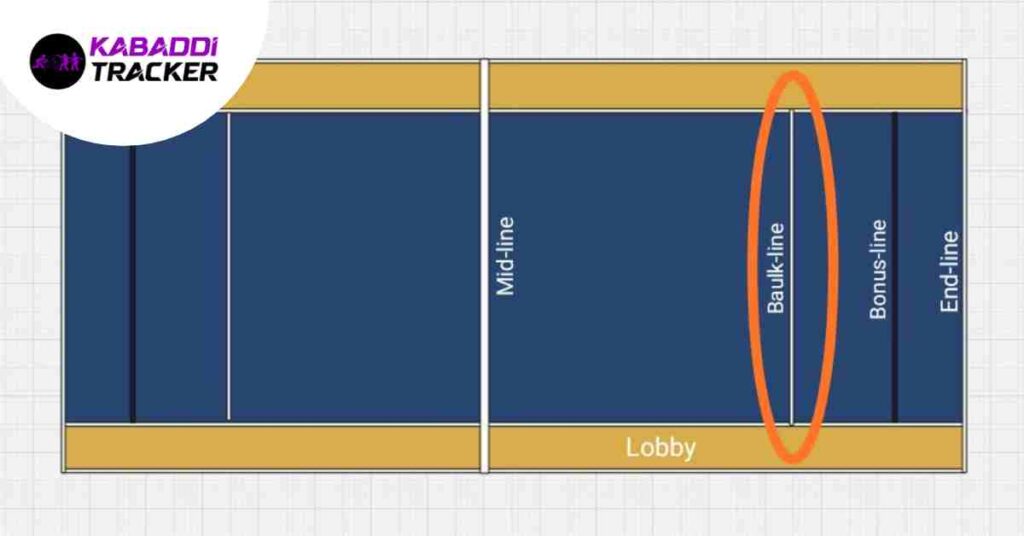
Bonus Line: Located at 7 meters (23 feet) from the balk line, the bonus line presents a component of hazard and reward to Kabaddi. During raids, in the event that a raider manages to cross this line while tagging defenders, their team gains additional points, highlighting the strategic consideration of whether to target this boundary. This aspect heightens the dynamic process for the two raiders and defenders, as they should gauge the potential for bonus points against the dangers presented by the resistance.
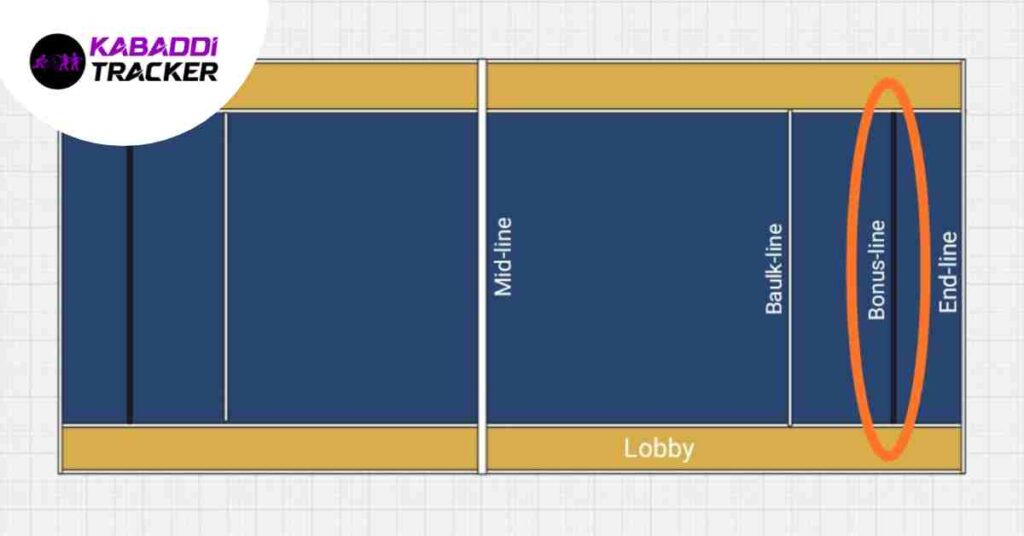
Also Read – Top Kabaddi Coaches in PKL
Lobbies: Two lobbies, each spanning 1 meter (3 feet 3 inches), are situated on one or the other side of the court. These unassuming spaces act as vital escape courses for raiders caught in a precarious situation. On the off chance that a raider adventures past the court’s limits, they can return through the lobbies, avoiding capture and safeguarding their team’s energy. These lobbies mirror the game’s dynamic nature, granting players another opportunity to strategize and recuperate from challenging scenarios.
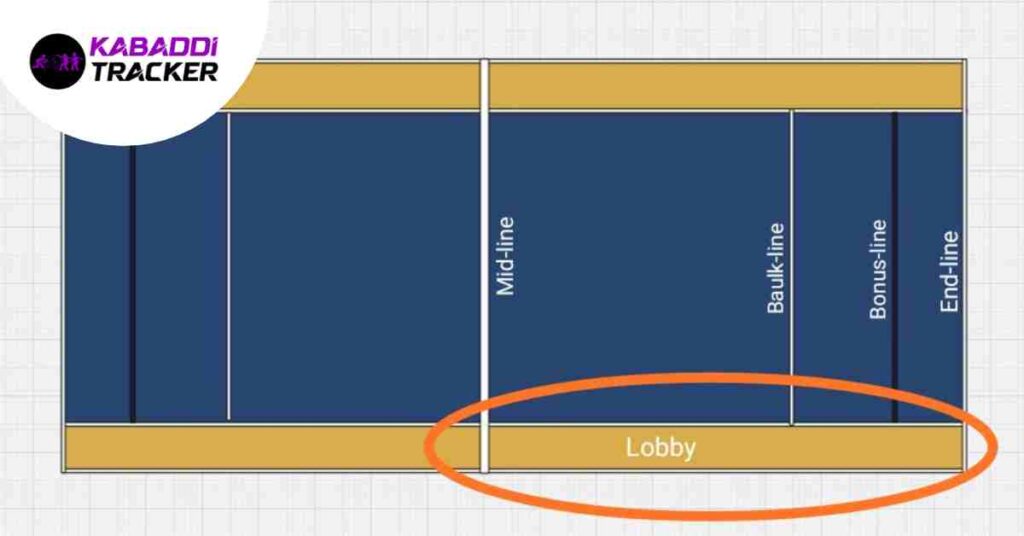
End Lines: The end lines, perpendicular to the sidelines, mark the degrees of the playing area, guaranteeing that the game adheres to clear-cut boundaries. Players should remain inside these lines, which encapsulate the beat of the match. The end lines, along with the sidelines, create a tangible arena where players engage in battles of expertise and mind, making every last trace of this boundary relevant to the game’s result.
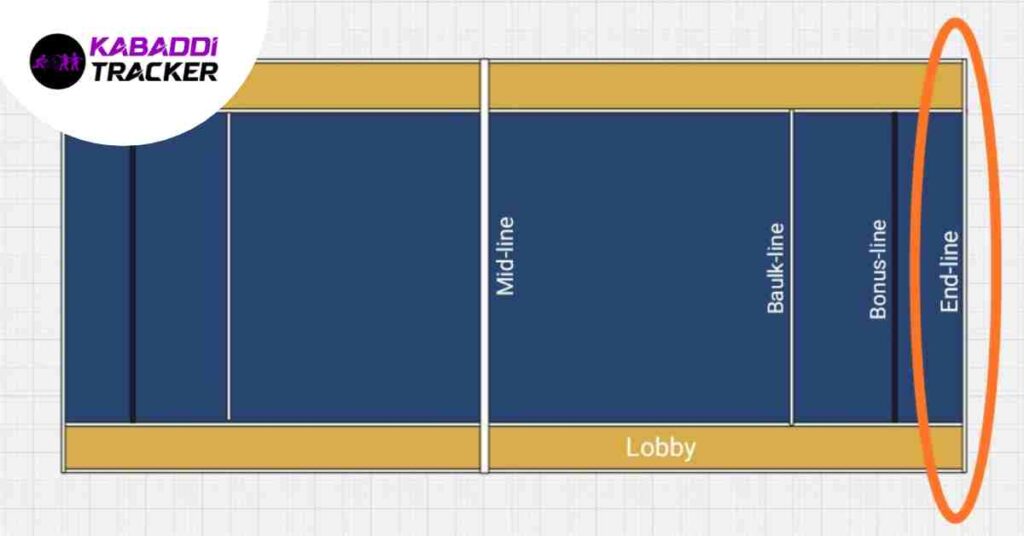
Kabaddi Rules and Measurement of Kabaddi Field
A junior Kabaddi court includes several crucial components that add to the ease and fairness of the game:
Mat: The central playing area is covered by a soft mat that safeguards players from impact and provides traction for quick development. The mat is a crucial safety component, guaranteeing players can execute maneuvers without taking a chance at injury.
Markers and Lines: Clearly marked lines, carefully measured and definitively drawn, are essential for maintaining the honesty of the court’s dimensions. These lines incorporate the midline, balkline, and bonus line, all of which play a job in regulating player development.
Scoreboard: Situated near the court, the scoreboard monitors the game’s progress, displaying points earned by each team. This feature aids players, officials, and spectators in staying informed about the match’s unfurling dynamics.
Officials’ Area: Refs and officials directing the game require a designated area to manage the match effectively. This area provides them with a vantage highlight make accurate choices and implement the guidelines successfully.
